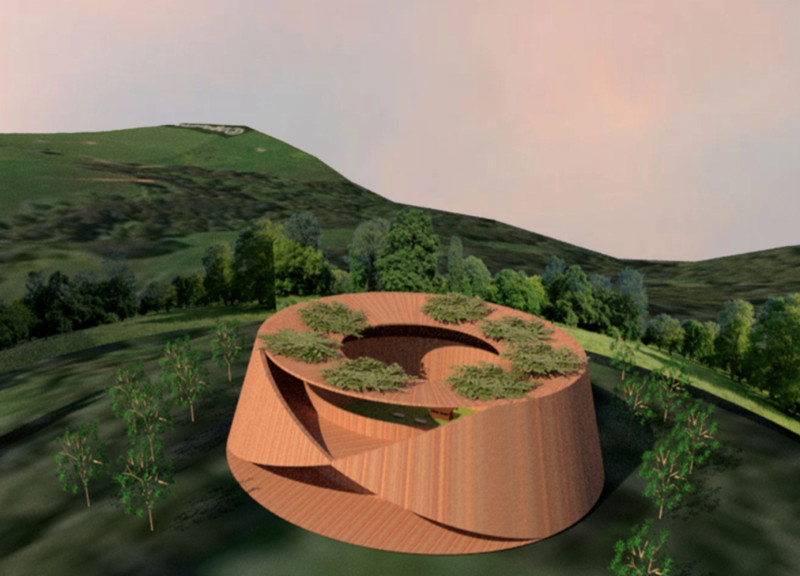5 key facts about this project
The design draws its inspiration from the form of a bird's nest, resulting in a two-story structure that interacts with its natural surroundings. This building emphasizes sustainability by using candle lighting instead of electric illumination. The choice fosters a warm and inviting atmosphere, encouraging a connection with the natural environment and offering a unique experience for its users.
Conceptual Framework
The project's main concept centers around the shape and function of a bird's nest, which informs both the visual appearance and practical design. This natural influence creates a link between the building and the surrounding landscape, promoting a harmonious living space that is environmentally friendly. The layout not only serves functional needs but also creates a sense of comfort and safety within its walls.
Material Selection
Wood is the primary material used throughout the structure, recognized for its many benefits. The material helps manage indoor temperatures, staying warm in winter and cool in summer. This choice of wood emphasizes the building's connection to nature and enhances the comfort of those inside. The tactile and natural qualities of wood contribute to the overall experience of the space.
Construction Methodology
The project utilizes prefabricated components for its roof, walls, and floors. This method streamlines construction and reduces the need for unnecessary structural supports. Solid profiles are used in the load-bearing frameworks, ensuring a stable and robust construction. By employing these efficient methods, the project minimizes costs and speeds up the installation process, allowing for quicker completion.
Site Considerations
The location presents challenges due to uneven terrain, necessitating a foundation that raises the structure to a level position. This practical solution ensures the building remains stable and usable, adapting well to its environment.
An interesting element of the design is the ability to create large open spaces while still allowing ample natural light. The candle lighting not only enhances the warmth of the interior but also sets a distinctive atmosphere that differentiates the experience within this space.






















































